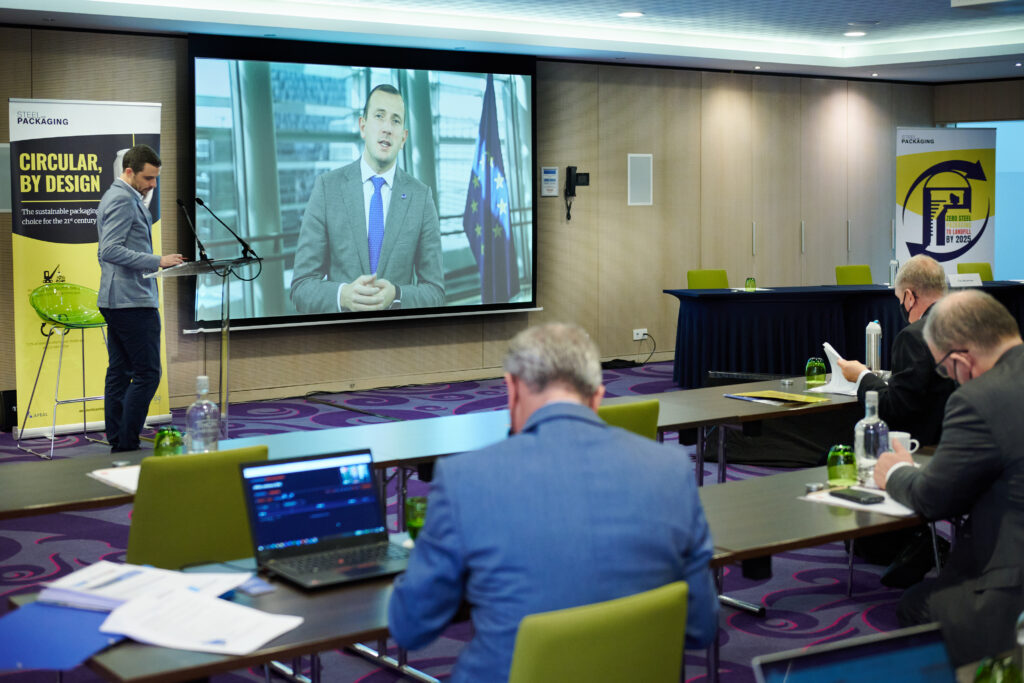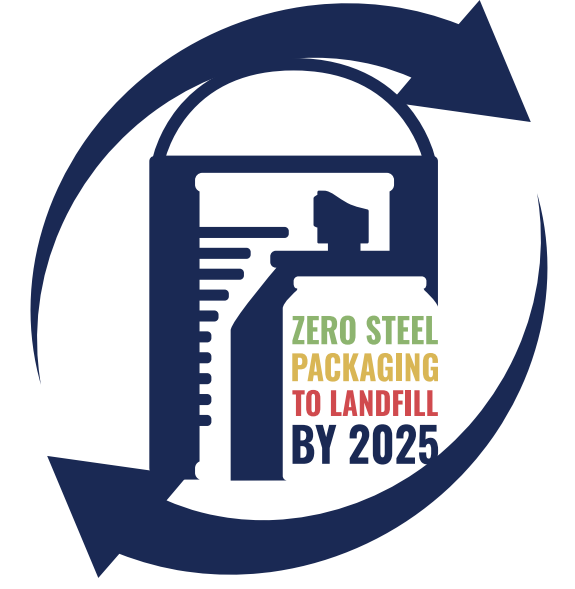#07.04.2022 WHY WE RECOMMEND STRENGTHENING EU POLICY TO ENSURE NO RECYCLABLE PACKAGING GOES TO LANDFILL
By Alexis Van Maercke
On 1st February during our conference From Vision to Reality; Closing the loop on steel packaging, we launched our new report How to recycle steel – Why steel packaging recycles forever.
 The third of our six key recommendations in this report is to revise EU legislation in order to accelerate the phase-out of landfilling recyclable waste, which itself is the objective of our recycling vision – zero steel packaging to landfill by 2025.
The third of our six key recommendations in this report is to revise EU legislation in order to accelerate the phase-out of landfilling recyclable waste, which itself is the objective of our recycling vision – zero steel packaging to landfill by 2025.
Presented by APEAL President Viliam Gašpar in his opening words to all participants, our vision was endorsed by Commissioner Sinkevičius in his video message and supported during the high-level policy debate.
Watch more in our highlights video here.
 Indeed, the correct handling of waste steel packaging can help society move towards a more efficient and circular economy. The reality is that no steel packaging needs to be wasted and none should go to landfill. It is too valuable a resource and already has a well-established market – 100% of recycled steel is used to make new steel products.
Indeed, the correct handling of waste steel packaging can help society move towards a more efficient and circular economy. The reality is that no steel packaging needs to be wasted and none should go to landfill. It is too valuable a resource and already has a well-established market – 100% of recycled steel is used to make new steel products.
To achieve the goal of zero steel packaging to landfill, we recommend an ambitious revision of the Packaging and Packaging Waste Directive (PPWD). This should be complemented by a review of the Landfill Directive (LFD), as there is an opportunity to make significant progress in achieving a circular packaging value chain. Closing the loop for steel packaging is only possible if landfill disposal is phased out.
Several countries across Europe are already taking legislative measures to ban or reduce the quantity of recyclable materials that end up in landfill. Such measures include increased landfill taxes over time, increased recycling targets for packaging and the introduction of mandatory separate collection schemes for household waste.
The steel for packaging industry promotes this last measure of mandatory separate collection. However, as a shared responsibility between local, central authorities, brand owners and retailers, packaging recovery organisations, companies organising collection, sorting and/or recycling and consumers, all must assume their designated responsibilities for this route to be efficient.
As steel is a permanent material that can be infinitely recycled, neither the collection nor the sorting processes have an impact on its inherent properties. Recycling steel saves up to 70% of the energy needed to make steel with raw material so it makes environmental and financial sense to divert as much waste steel packaging as possible from landfill.
 Our new report includes further recommendations on how we can reach APEAL’s vison of ‘zero steel packaging to landfill by 2025’ and I’ll discuss some of these in more detail in my next blog.
Our new report includes further recommendations on how we can reach APEAL’s vison of ‘zero steel packaging to landfill by 2025’ and I’ll discuss some of these in more detail in my next blog.
A copy of the report can be downloaded here.
